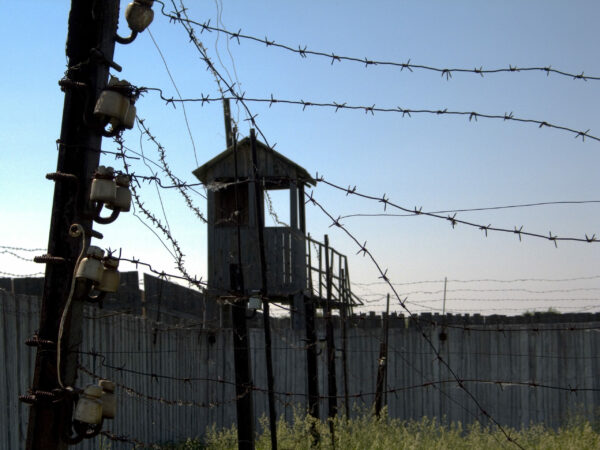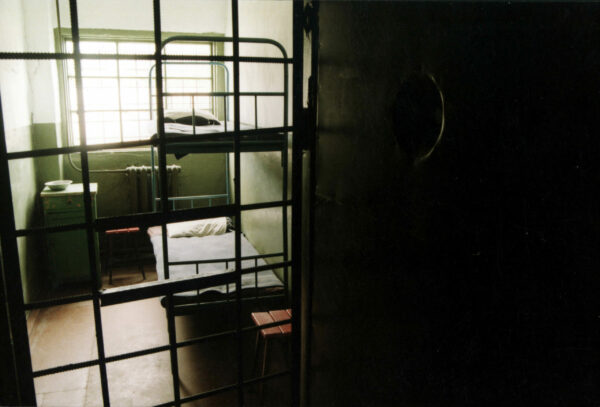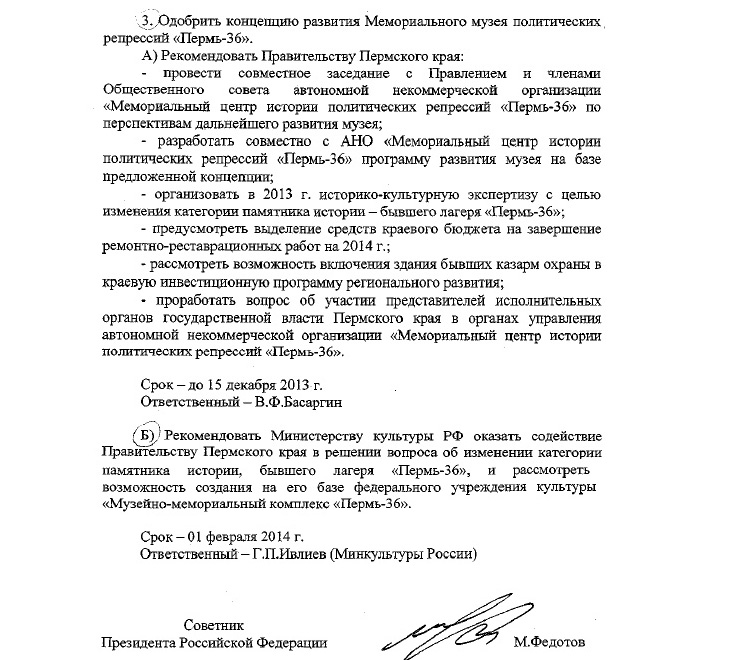In 1996, the former forced labor camp VS-389/36, known as Perm-36, was given the status of a local historical monument by the decision of the Legislative Assembly and the Administration of the Perm Region at the request of the Perm branch of the Memorial society. This made it possible to partially finance from the regional budget the restoration of the buildings of the former camp and the creation on its basis of the Memorial Museum of the History of Political Repressions. All restored buildings and structures remained in the state ownership of the Perm region.

Penalty cell of the camp Perm-36
In 1997, the initiators of the conservation and museumification of the former Perm-36 camp turned to the Ministry of Culture of the Russian Federation with a proposal to recommend its inclusion in the List (Code) of especially valuable cultural heritage sites in the Russian Federation. The proposal was rejected with a verbal explanation that in the current state of disrepair, the monument could not be included in this List: “Complete the main restoration and restoration work and then apply.”

Remains of the protective systems of the camp Perm-36
In 2002, the WMF (World Monuments Found) drew attention to the plight of the monument, every two years publishing a list of 100 world-famous monuments in danger – World Monuments Watch. And already in the next issue of the publication in 2004, an article Perm-36 appeared, telling both about the significance of this object and its deplorable state. This precedent has helped attract additional regional and international funding for restoration work. And although this event did not bring the monument a protected status, it made it possible to draw the attention of the world’s largest experts in the field of preserving cultural and historical heritage to it. (More about World Monuments Watch)
In 2007, the International Council on Monuments and Sites (ICOMOS) heard information about the Perm-36 monument at its meeting in Portland (USA) and recommended that the UNESCO World Heritage Committee be contacted with a proposal to its inscription on the World Heritage List. But only the government of the country can make such an appeal to UNESCO, and according to Russian legislation, the monument should already be included in the List of Especially Valuable Monuments of the Russian Federation by this moment. The Ministry of Culture repeated the previous condition.

Chamber of the special regime barracks
The main restoration and restoration work was completed by 2012 and, in agreement with the governor and the government of the region, an examination of the monument was scheduled for 2013 by experts from the Ministry of Culture of the Russian Federation, the UNESCO World Heritage Committee and ICOMOS and all necessary documents were prepared. But in 2013, the authorities in the Perm Territory changed, and the leadership of the Ministry of Culture of the Territory, appointed by the new governor, canceled the examination, citing the lack of funding.

Extract from the protocol No. 10 of the Interdepartmental working group on the preparation of proposals for perpetuating the memory of victims of political repression
On October 9, 2013, the fate of the museum was decided at the level of the Interdepartmental Working Group for the preparation of proposals for perpetuating the memory of victims of political repression, which had been acting by order of Russian President Dmitry Medvedev since the end of 2011. The working group, by its Minutes No. 10, approved the concept of the development of the Perm-36 Memorial Museum of the History of Political Repressions and recommended the Minister of Culture of the Russian Federation “to assist the Government of the Perm Territory in changing the category of the historical monument, the former Perm-36 camp.” Among the recommendations were the organization of an examination, the allocation of regional funds for restoration and the inclusion of the monument in the regional investment program. In the future, the museum “Perm-36” was to become a federal institution.
But in 2014, the draft state program to perpetuate the memory of the victims of political repression was transformed into a concept of state policy and was soon forgotten. The territory and buildings of the former Soviet political camp, whose memorial uniqueness has been repeatedly recognized by the international community, have not received either federal or international status of a protected object.

